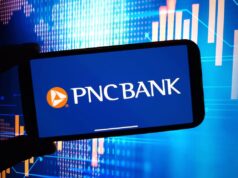Ripple announced its $200 million acquisition of Rail, marking one of its most ambitious manoeuvres in recent years. The deal will integrate the cross-border payroll and stablecoin payments platform Rail into Ripple’s ecosystem. By doing so, the company aims to accelerate the adoption of the RLUSD stablecoin in enterprise finance and put it in direct competition with leading USDC and USDT stablecoins.
Combining Rail’s compliance-driven infrastructure with Ripple’s existing payments network, the company is betting on a future where regulated stablecoins dominate payroll, remittances, and global B2B transactions. For anyone following Ripple stablecoin news, it’s a clear sign that RLUSD is steadily gaining ground.
A Closer Look at the $200M Ripple Rail Acquisition
This $200 million deal hands Ripple full control of Rail, a Toronto-based fintech known for instant, compliant cross-border payroll and enterprise payment flows. Rail’s API-driven platform enables real-time settlements in multiple currencies, so Ripple plans to extend these capabilities to its RLUSD stablecoin.
RLUSD, launched in December 2024, is a U.S. dollar–pegged, fully regulated stablecoin for institutional and enterprise adoption. By integrating Rail’s infrastructure, Ripple can embed RLUSD instantly into high-volume payment corridors across North America, Europe, and Asia. This move solidifies the acquisition as one of the company’s most strategically timed plays so far.
Why Ripple Is Buying Rail
1. Enterprise Expansion
Rail’s platform gives Ripple direct access to payroll providers, remittance companies, and multinational corporations. This supports Ripple’s enterprise stablecoin adoption strategy.
2. Technology Synergy
Rail’s real-time settlement, compliance automation, and API integration make it a natural fit for Ripple’s payment infrastructure.
3. Global Growth
The deal supports Ripple’s push into regulated jurisdictions, which, in turn, helps build trust with banks, enterprises, and government partners.
Disrupting the Stablecoin Market
Ripple is positioning RLUSD as a competitor to USDC and USDT, specifically built for enterprise-grade use. This is where the stablecoin competition intensifies. Many consumer-facing stablecoins focus predominantly on retail users. RLUSD, on the other hand, is tailored for regulated environments, appealing to organizations that handle payroll or multi-national transactions.
Through Rail, Ripple can embed its stablecoin directly into payment platforms used for salaries, supplier payments, and remittances. Speed, low costs, and strict compliance matter the most in these types of real-world transactions, and RLUSD is designed to deliver all three.
Regulatory and Market Implications
The acquisition also doubles as a regulatory move. As more countries introduce stablecoin frameworks, Ripple wants to be a first-mover in enterprise adoption under compliant structures. Analysts believe this could indeed give Ripple an edge with central banks, financial hubs, and large corporations.
USDC and USDT remain strong in liquidity. However, neither has deep integration into payroll systems. It appears that Ripple may be ready to exploit that gap.
Industry Reactions
- Fintech analysts highlight the instant scalability RLUSD gains through Rail’s client base.
- Crypto market watchers see a direct challenge to USDC and USDT competitors in enterprise settlements.
- Payments insiders suggest other issuers may now seek partnerships with payroll or B2B providers.
What’s Next for Ripple and RLUSD
Ripple says integration will start immediately. Key focus areas include:
- Payroll for multinational corporations
- Remittances in high-volume corridors
- B2B settlement for cross-border trade
If the rollout goes as planned, RLUSD could set the standard for compliant cross-border stablecoin use in enterprise payments and establish a benchmark in the evolving stablecoin market.
>>> Read more: Ripple Hidden Road Acquisition: A Strategic Shift
Ripple’s Rail acquisition is both a growth strategy and a challenge to the stablecoin status quo. By pairing Rail’s infrastructure with RLUSD, Ripple is scaling its payments network and positioning itself as a leader in regulated stablecoins. In the long term, this move could well make it a challenger to USDC and USDT dominance.
Readers’ frequently asked questions
Will RLUSD be available for individuals to use, or is it only for businesses?
Ripple has positioned RLUSD primarily for institutional and enterprise adoption, but it is tradable on supported exchanges. Individuals can hold and use RLUSD where participating platforms provide access.
What jurisdictions is Rail licensed to operate in?
Rail operates under regulatory approvals in Canada and maintains compliance partnerships to support cross-border payment processing in select international markets.
Does acquiring Rail mean Ripple now needs additional regulatory approvals in other countries?
Yes. Rail’s licenses cover specific regions, but Ripple must meet the regulatory requirements of each jurisdiction where it expands RLUSD-related services.
Does the acquisition give Ripple control over Rail’s existing client contracts?
Yes. The transaction includes Rail’s operational assets and client relationships, giving Ripple control over existing contracts unless limited by particular agreements.
What Is In It For You? Action items you might want to consider
Track RLUSD listings and trading volumes
Keep an eye on exchanges that list RLUSD and monitor its liquidity growth after the Rail acquisition. Rising volumes could indicate increasing institutional adoption and signal potential trading opportunities.
Watch for enterprise partnerships using RLUSD
Follow Ripple’s announcements and industry news for payroll, remittance, or B2B platforms integrating RLUSD. Each confirmed integration could drive demand and strengthen the token’s market position.
Assess the competitive response from USDC and USDT issuers
Stay alert for moves by established stablecoin players to secure new partnerships or enhance enterprise offerings. Their actions could impact RLUSD’s growth trajectory and shape short-term market sentiment.











[…] >>> Read more: Ripple Rail Acquisition: $200M Boost for RLUSD Stablecoin […]
[…] estimated transactions. Earlier deals included Hidden Road (prime brokerage, ≈ $1.25 billion), Rail (stablecoin infrastructure, ≈ $200 million), and GTreasury (corporate treasury platform, ≈ $1 […]